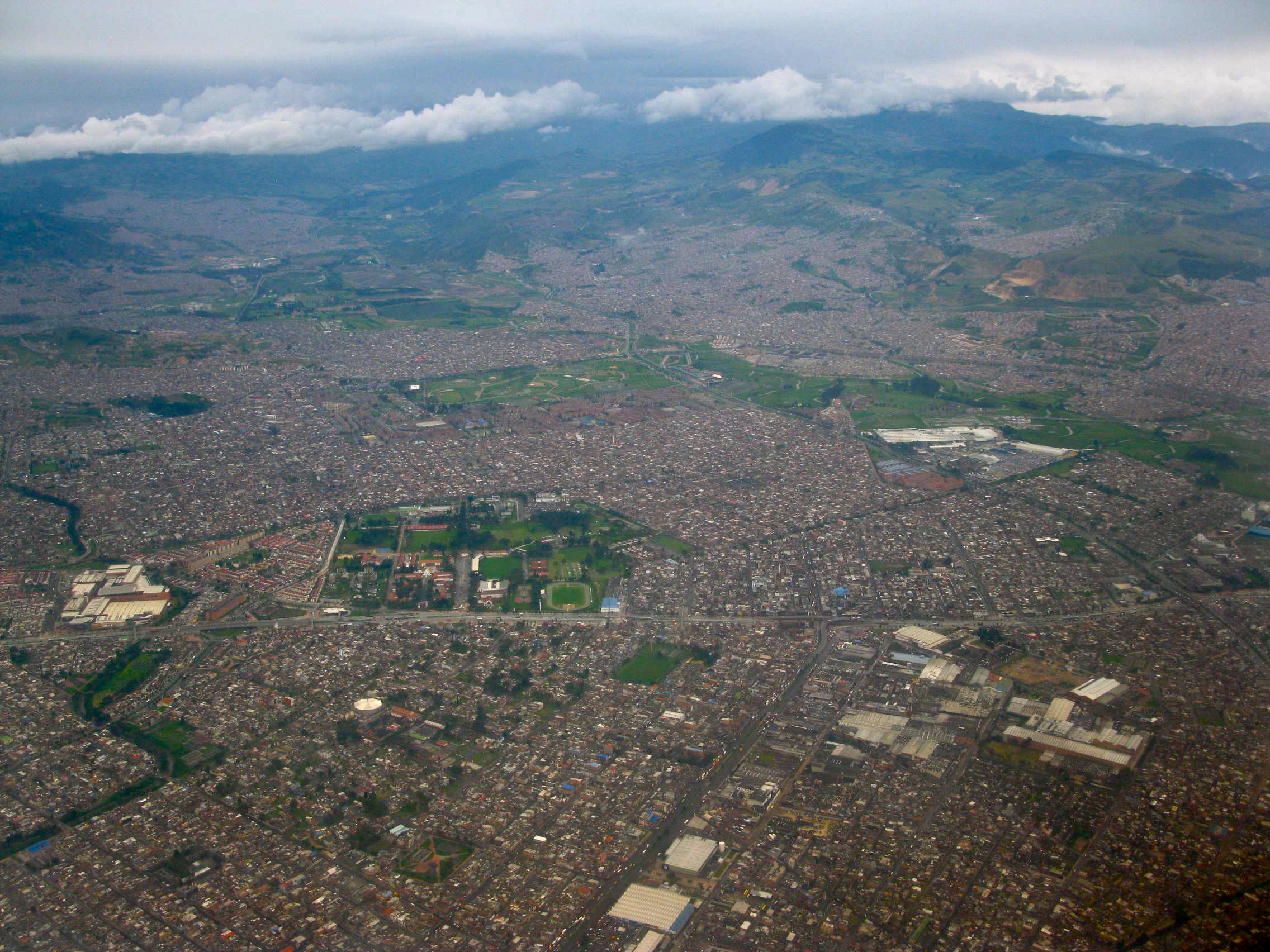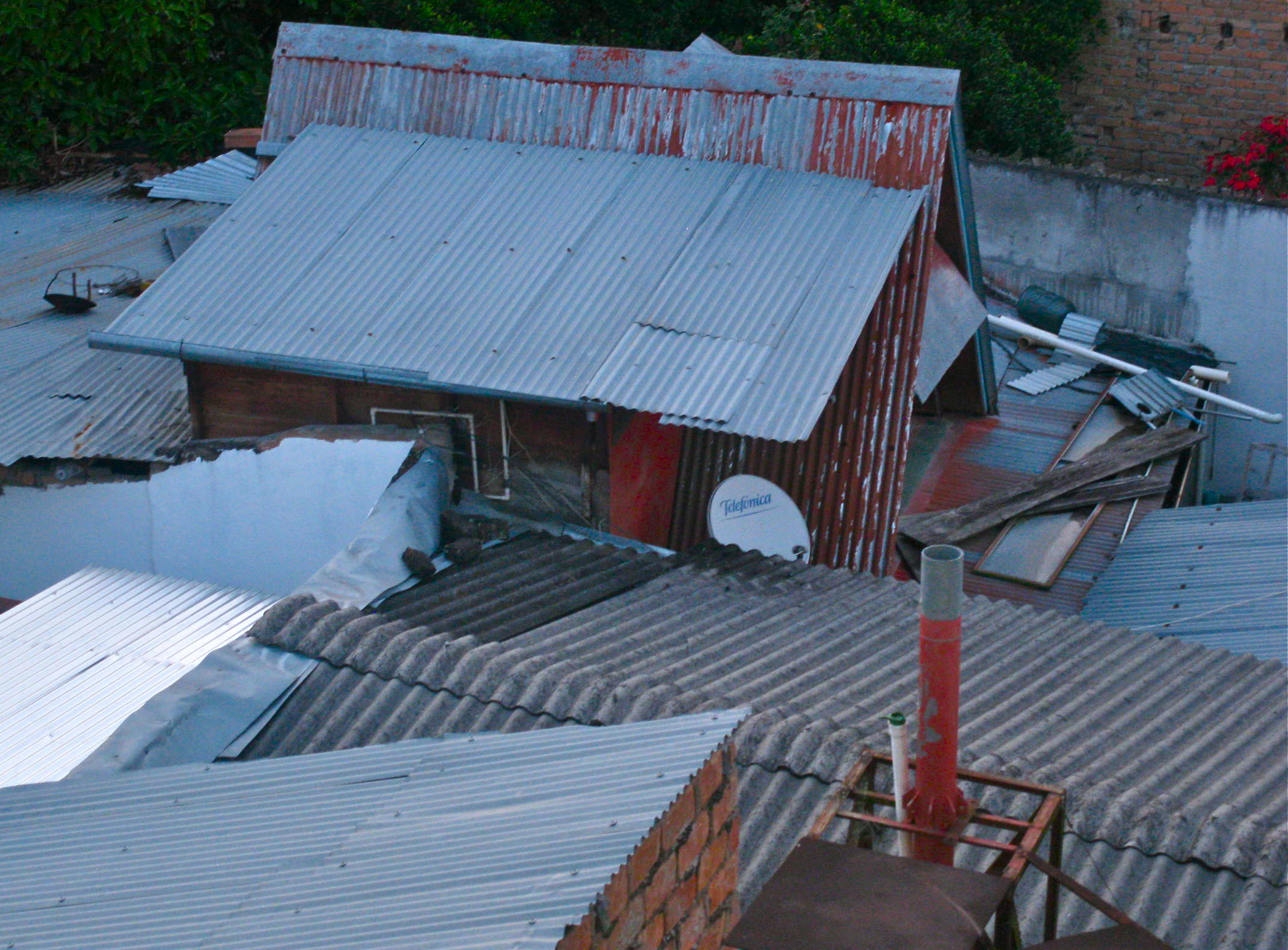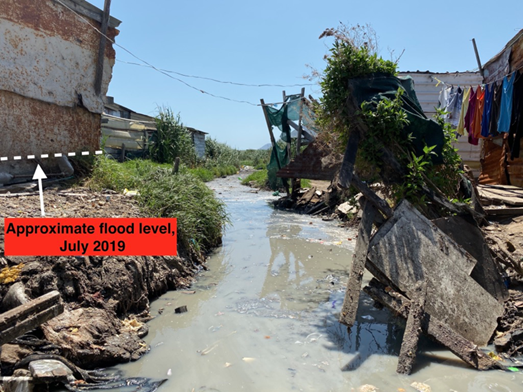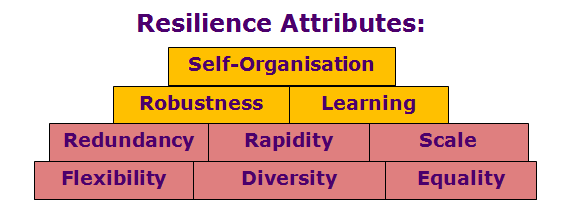 The complexity of urban contexts poses new challenges and opportunities to processes of resilience building. While increasing attention is being paid to the threats posed by climate change and variability to rural environments, urban marginalization poses equally important challenges that need to be examined from a ‘resilience lens’, fostering innovative responses towards urban change and transformation.
The complexity of urban contexts poses new challenges and opportunities to processes of resilience building. While increasing attention is being paid to the threats posed by climate change and variability to rural environments, urban marginalization poses equally important challenges that need to be examined from a ‘resilience lens’, fostering innovative responses towards urban change and transformation.
Large and growing cities in developing countries are facing increasing risks associated with water scarcity, flash floods, landslides and mudflows, which are intensified by climate change and variability. Within contexts such as urban slums, the impacts of climate stressors converge with increasing overcrowding, unregulated and unsafe housing, growing risks associated with solid and liquid waste, high levels of informality and lack of access to stable income sources, as well as social pressures due to limited access to services and deficient infrastructure, among others (Tanner et al. 2009, Romero-Lankao, 2011).These factors constrain their adaptive capacity, and heighten their exposure to climatic stresses.
Thus, the rapid processes of urbanisation taking place in the global South pose the need to rethink the way in which climate change adaptation and resilience are built within urban low-income settings, and identify new mechanisms and tools through which change and transformation can be enabled.
 Tools such as Information and Communication Technologies (ICTs) have been diffusing rapidly among the urban poor, providing new livelihood opportunities and fostering entrepreneurship through PC/Internet related microenterprises, mobile phones and associated services and applications (UNCTAD, 2010). Studies suggest that ICTs have helped to improve the availability of information in the informal sector, to reduce transaction costs and improve job creation and access to markets, contributing to income generation (ibid). (In the picture, an informal vendor in Colombia diversifies her income by selling mobile minutes).
Tools such as Information and Communication Technologies (ICTs) have been diffusing rapidly among the urban poor, providing new livelihood opportunities and fostering entrepreneurship through PC/Internet related microenterprises, mobile phones and associated services and applications (UNCTAD, 2010). Studies suggest that ICTs have helped to improve the availability of information in the informal sector, to reduce transaction costs and improve job creation and access to markets, contributing to income generation (ibid). (In the picture, an informal vendor in Colombia diversifies her income by selling mobile minutes).
However, much less is known in terms of the linkages between ICTs and climate change resilience within urban contexts.
Could ICTs help to build Urban Resilience to the impacts of Climate Change and Variability?
The ability of the urban populations to withstand, recover and adapt to the impacts of climate change and variability depends on a myriad of factors. The following points illustrate some of the areas where ICT tools could help to enable urban resilience:
Urban Hazard Mapping & Community Involvement
- Relevant local data that is collected, mapped and accessed with the support of ICT tools can inform decision-making processes and strengthen local governance. The use of ICTs such as Geographic Information Systems (GIS) in local hazard mapping and analysis can help to identify and illustrate evacuation routes as well as to locate housing, business and structures that are at risk of threats such as rises in water levels (Peirce et al, 2008). The availability of this information, in formats that are easily understood by all levels of stakeholders, could also motivate community members and local governments to engage in joint climate change responses.
- ICT applications such as participatory videos, photo-diaries or the use of mobile phones for collective mapping/monitoring exercises, could be used to foster greater involvement of low-income urban dwellers in climate change and risk-reduction initiatives, involving them in decisions such as the best location for drinking water supplies in case of sudden salinization, or failures in drainage systems due to floods.
- ICTs can be used to foster participative processes and multi-stakeholder discussions about issues that affect urban populations such as transportation and land use, as well as in the participative planning of climate-change initiatives that seek to reduce adaptive deficits.
Urban Risk Reduction & Public Awareness
- Compelling mapping supported by ICTs can help to determine the different levels of vulnerability that exist within low-income urban settlements, allowing stakeholders to take appropriate measures towards risk reduction. New and traditional ICTs (e.g. mobile phones, community radios) can also be used as effective information and early-warning channels among populations settled in dangerous terrains.
- Policy and research networks can be supported by social media tools to discuss and give visibility to climate-related agendas that respond to the needs and priorities of low-income urban populations.
- ICTs can also play a role in efforts to raise public awareness on health-related problems that are intensified by climate change manifestations and variability, such as malaria and dengue, helping to disseminate measures to prevent or control the spread of the virus. ICT tools can also support public awareness and education campaigns on safe-housing construction, water storage and robust drainage systems, empowering the community to mitigate the impacts of climatic occurrences.
Urban Capacity-Building & Networking
- Online training programs and access to broader networks of practitioners and experts to share lessons and resources could help to strengthen the institutional capacity of those involved in processes of urban planning and design.
- ICT tools that allow spatial mapping can also strengthen the capacity of urban planners by providing more accurate representations of local realities, identify priorities, and design more inclusive development plans. Climate change models and projections supported by ICTs can help to identify the long-term implications of planning measures and land-use, contributing to the adoption of more sustainable strategies.
- ICTs can also be used to enable communication and exchange between local governments, communities, grass-roots organisations and researchers working in urban development programmes, strengthening transparency, accountability and public support.
- ICTs used in support of social networking can also improve the capacity of low-income urban communities to respond effectively in the case of climate-induced emergencies, as well as to access information about markets, employment opportunities and livelihood alternatives.
 Amidst increasing climatic uncertainty, the challenges faced by low-income urban populations should be met through dynamic, flexible and innovative approaches that foster their capacity to engage, adapt and transform.
Amidst increasing climatic uncertainty, the challenges faced by low-income urban populations should be met through dynamic, flexible and innovative approaches that foster their capacity to engage, adapt and transform.
The use of ICT tools can contribute to such approaches by enabling new forms of accessing, mapping and sharing relevant information, strengthening individual and institutional capacities, fostering livelihood options and participatory decision-making, and helping to operationalise new partnerships and collaboration among the multiple stakeholders that play a role in adaptation and resilience building.
(*In the picture, informal housing with satellite dish)
———————————————————————
References
Peirce, N., Johnson, C., Peters, F. (2011) “Century of the City: No time to Lose”, The Rockefeller Foundation, New York.
Romero-Lankao, P. (2011) “Urban Responses to Climate Change in Latin America: Reasons, Challenges and Opportunities”, Architectural Design, May/June 2011, No 211, pp. 76-79.
Tanner, T., Mitchell, T., Polack, E., Guenther, B. (2009) “Urban Governance for Adaptation: Assessing Climate Change Resilience in Ten Asian Cities”, IDS Working Paper 315. UK.
UNCTAD, (2010). “ICTs, Entreprises and Poverty Alleviation”, Information Economy Report 2010


 The complexity of urban contexts poses new challenges and opportunities to processes of resilience building. While increasing attention is being paid to the threats posed by climate change and variability to rural environments, urban marginalization poses equally important challenges that need to be examined from a ‘resilience lens’, fostering innovative responses towards urban change and transformation.
The complexity of urban contexts poses new challenges and opportunities to processes of resilience building. While increasing attention is being paid to the threats posed by climate change and variability to rural environments, urban marginalization poses equally important challenges that need to be examined from a ‘resilience lens’, fostering innovative responses towards urban change and transformation. Tools such as Information and Communication Technologies (ICTs) have been diffusing rapidly among the urban poor, providing new livelihood opportunities and fostering entrepreneurship through PC/Internet related microenterprises, mobile phones and associated services and applications (UNCTAD, 2010). Studies suggest that ICTs have helped to improve the availability of information in the informal sector, to reduce transaction costs and improve job creation and access to markets, contributing to income generation (ibid). (In the picture, an informal vendor in Colombia diversifies her income by selling mobile minutes).
Tools such as Information and Communication Technologies (ICTs) have been diffusing rapidly among the urban poor, providing new livelihood opportunities and fostering entrepreneurship through PC/Internet related microenterprises, mobile phones and associated services and applications (UNCTAD, 2010). Studies suggest that ICTs have helped to improve the availability of information in the informal sector, to reduce transaction costs and improve job creation and access to markets, contributing to income generation (ibid). (In the picture, an informal vendor in Colombia diversifies her income by selling mobile minutes). Amidst increasing climatic uncertainty, the challenges faced by low-income urban populations should be met through dynamic, flexible and innovative approaches that foster their capacity to engage, adapt and transform.
Amidst increasing climatic uncertainty, the challenges faced by low-income urban populations should be met through dynamic, flexible and innovative approaches that foster their capacity to engage, adapt and transform.